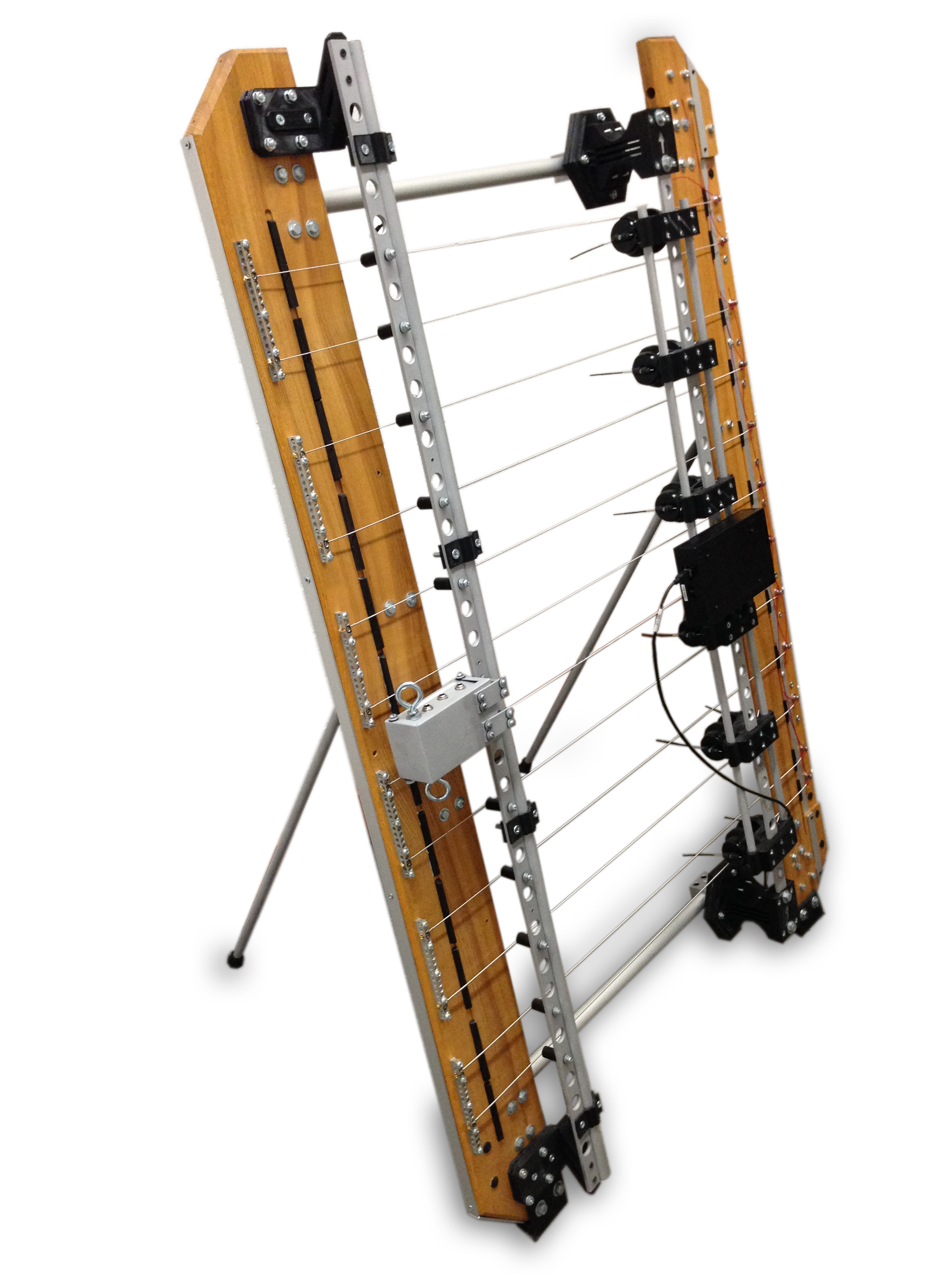The Open String began from a desire to drum on strings. Electronic drums offered too little expressiveness, given their reliance on the MIDI protocol’s 127 levels of sample triggering. An amplified string was the touch sensitive medium I knew of, therefore I sought to build something that would let me drum but with strings.
Genesis of a New Musical Instrument
Research
Many pitched percussion string instruments have existed prior. I studied the nature of these instruments as well as fundamental aspects of all stringed instruments during the design phase of the Open String.
Prior Art
Left to right: Santur, Cymbalum, Yangqin
12
42
5
Made of Ash Wood with Tubular Aluminum Cross Members.
A Successful Sonic Experiment
The Open String has been used in various live performances over the years. It’s been used in both the fully automated mode in which the solenoids follow a MIDI track and strike the strings according to pre-composed backing lines. It has also been used by students at various universities to create new sonic textures by exploring the possibilities of direct interaction with highly resonate and amplified strings.
A Diagrammatic Overview
Below is a interactive infographic that reveals more detail about the device.
Hover over the + signs to read about each element.

Materials and Parts


